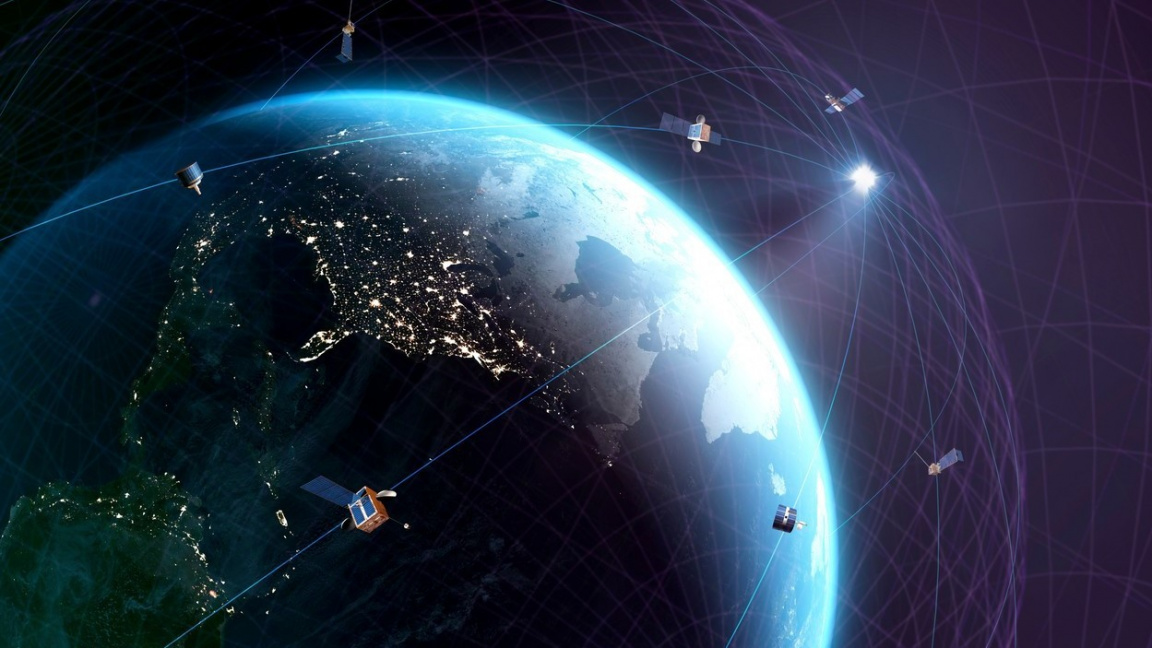The sun was threatening. Dozens of Musk satellites fell victim to a geomagnetic storm
Elon Musk’s Starlink satellite network has taken a heavy hit from the sun. Forty satellites for the transmission of the internet were destroyed in orbit by an unexpected geomagnetic storm.
The sun is the source of life. It sends us beneficent rays, without which our earthly existence would be unthinkable. However, our nearest star is also capable of destruction and can be dangerous for the technical toys of our civilization. Most recently, it demonstrated this last week, when it triggered a geomagnetic storm in the earth’s atmosphere, which destroyed four dozen Starlink satellites from Elon Musk’s SpaceX.
Full steam ahead against the storm
Satellites for the transmission of the internet handed out on Thursday 3. February to low orbit to a height of 210 kilometers rocket Falcon 9. She launched a batch of 49 satellites without any problems. These occurred the day after.
On Friday, satellites were hit by a geomagnetic storm triggered by eruptions on the sun that flooded the earth’s atmosphere with energy-charged particles. The particles heated the outer part of the atmosphere, thereby increasing its density.
The resistance of the atmosphere has increased by up to half, and even a change in the orientation of the satellites, which the Starlink control center put into security mode, did not help. In it, the satellites flew against the storm with the narrowest side to reduce the resistance to the smallest possible degree. However, after that, it was not possible to bring them to their original orientation to ascend to the planned orbit to a height of over 340 kilometers.
Thus, four dozen satellites returned to the atmosphere, where they burned. “Falling satellites will die when they return to the atmosphere, that is, there will be no orbital garbage and no parts will fall to Earth,” announced even before SpaceX.
She commended herself for this: “this unique situation shows how much effort the Starlink team has made to ensure that the system is at the forefront of reducing the amount of waste in orbit.“
The Falcon rocket carries satellites into low orbits, so that in exceptional cases, when one shows failures, it can be guided back into the atmosphere and not interfere in orbit, where it could endanger other satellites or orbital stations.
Stormy Sun
● The sun is a stormy ball, spewing matter, and its surface is transformed. Electrically charged even neutral particles leave the solar corona (the brightly glowing neighborhood of a star formed by hot gases), and with them radiation escapes – the solar wind, which flies near the earth at a speed of 800 kilometers per second.
● The amount of wind depends on the solar activity, which varies. Every second the sun leaves on a million tons of plasma. From its inception until today, our star has ejected 0.01 percent of its mass.
● If the current of charged particles from the solar storm is extremely strong. the Earth’s protective magnetic field fails to deflect it, and part of it hits the Earth, where it provokes a geomagnetic (magnetic) storm, and can also thicken the atmosphere. (Wikipedia)
–
SpaceX launches Starlink satellites from 2019. The company wants to get at least 12,000 into orbit, so far it’s got 2,000. It is clear that the loss of forty satellites will stand.
Star warning
Strong eruptions on the sun thickened the atmosphere and became fatal for Musk’s satellites. But they can do much more damage-disrupt navigation systems, destroy electrical networks, disable the internet… and throw continents into darkness.
Therefore, the destruction of satellites can serve as a warning about the power of a life-giving star. Our civilization is still defenseless against geomagnetic storms.and yet dependent on technical toys that such storms can cripple. Without them, our world could fall apart like a house of cards.
So far, the last major geomagnetic storm, known as the Carrington event, has struck 1. September 1859. But then only telegraphs sparkled and burned. Today, the impact of such a storm would be devastating.
In July 2012, such a mega-storm just narrowly missed us. The stereo-a probe, which orbits in the same orbit around the sun as the earth, recorded it at the place where our planet was located a week before. So far, we’re lucky … except for Elon Musk.
–


